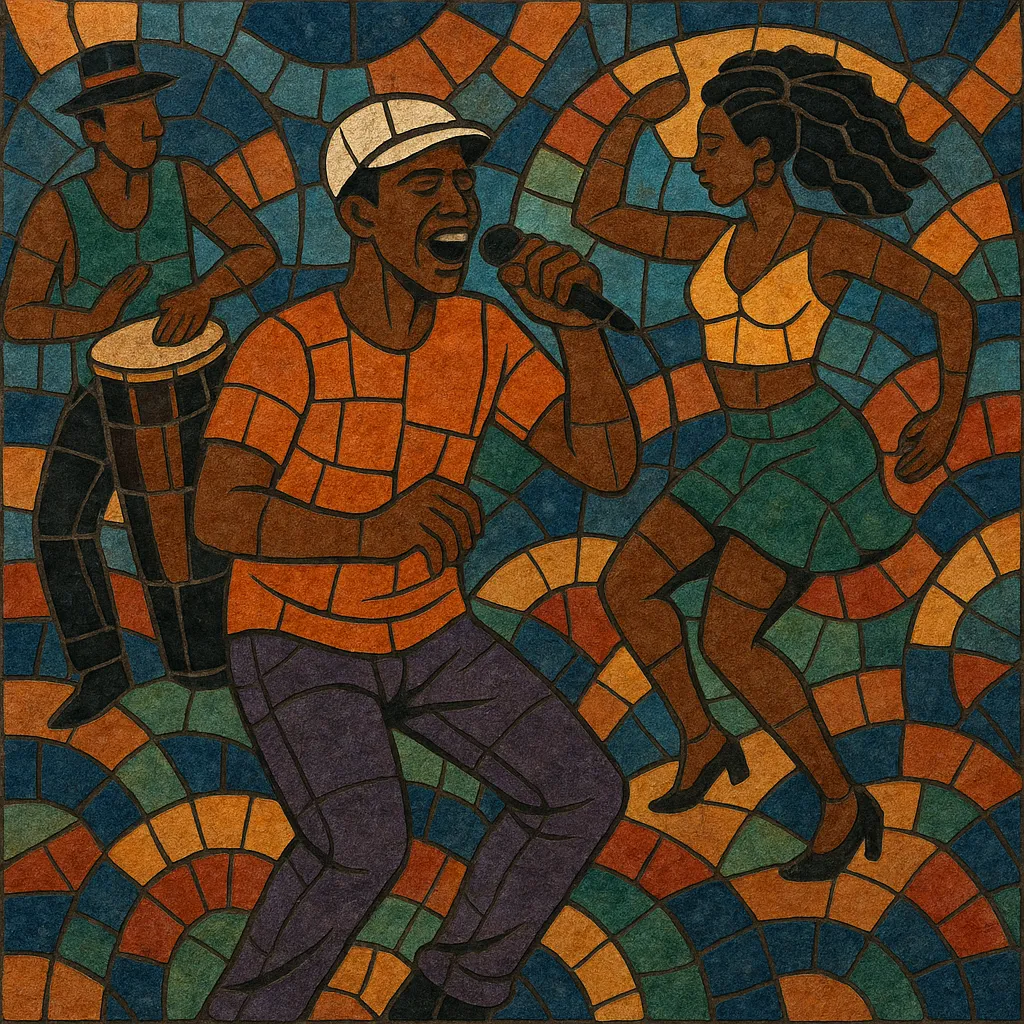Pagodão (often called pagode baiano) is a high-energy, percussion-driven offshoot of Brazilian pagode that originated in Salvador, Bahia.
It blends the party-forward hooks and call‑and‑response of pagode with the heavy Afro-Bahian groove of samba-reggae and axé, often adding modern elements like synth bass and 808s. The result is a syncopated “swingueira” feel designed for dancing, with catchy choruses, playful double entendres, and crowd-participation breaks.
Compared to Rio/São Paulo pagode, pagodão is rougher, louder, and more beat-centric, foregrounding timbal, surdo, and repinique patterns while keeping harmony simple so the percussion, choreography, and vocal refrains dominate.
Pagodão emerged in the mid-to-late 1990s in Salvador, Bahia, as local bands adapted Rio/São Paulo pagode to the Afro-Bahian percussive traditions that animate Salvador’s street culture and Carnival. The scene drew from samba de roda and the powerful drum-line feel of samba-reggae and axé blocos, emphasizing timbal, surdo, and repinique.
By the early 2000s, groups codified a signature “swingueira” groove—syncopated, bass-heavy, and built for collective dance. Choruses and call-and-response chants were designed for immediate crowd uptake; lyrics leaned into humor, sensuality, and double entendre. Acts such as É o Tchan!, Harmonia do Samba, and Psirico brought pagodão to mainstream Brazilian media and Carnival stages.
Hits like Parangolé’s “Rebolation” and Psirico’s “Lepo Lepo” spread nationwide, with choreography integral to the songs’ popularity. Television variety shows, Carnival trios elétricos, and later social platforms helped turn new refrains and dances into national crazes, while the sound continued to absorb funk carioca textures and pop production.
Pagodão remains a Carnival staple in Bahia and a party soundtrack across Brazil. Its influence can be heard in contemporary axé updates, crossovers with funk and arrocha, and Brazilian pop hits that borrow its chantable hooks and percussive drive. The genre endures as a living dance culture as much as a musical style.


